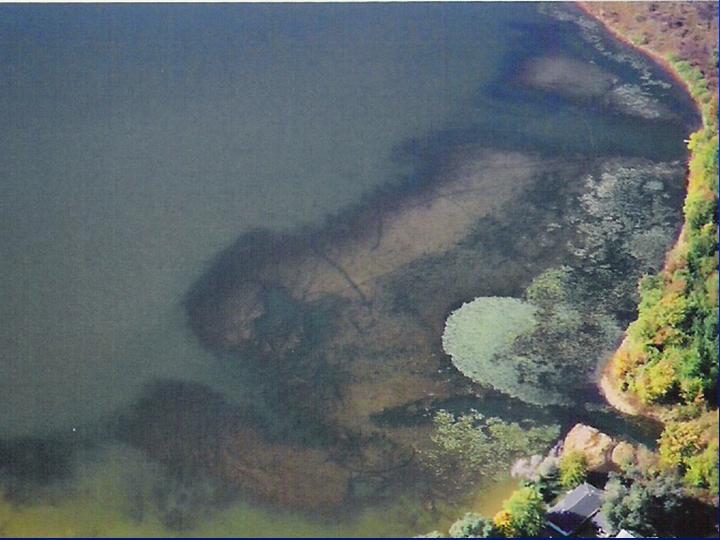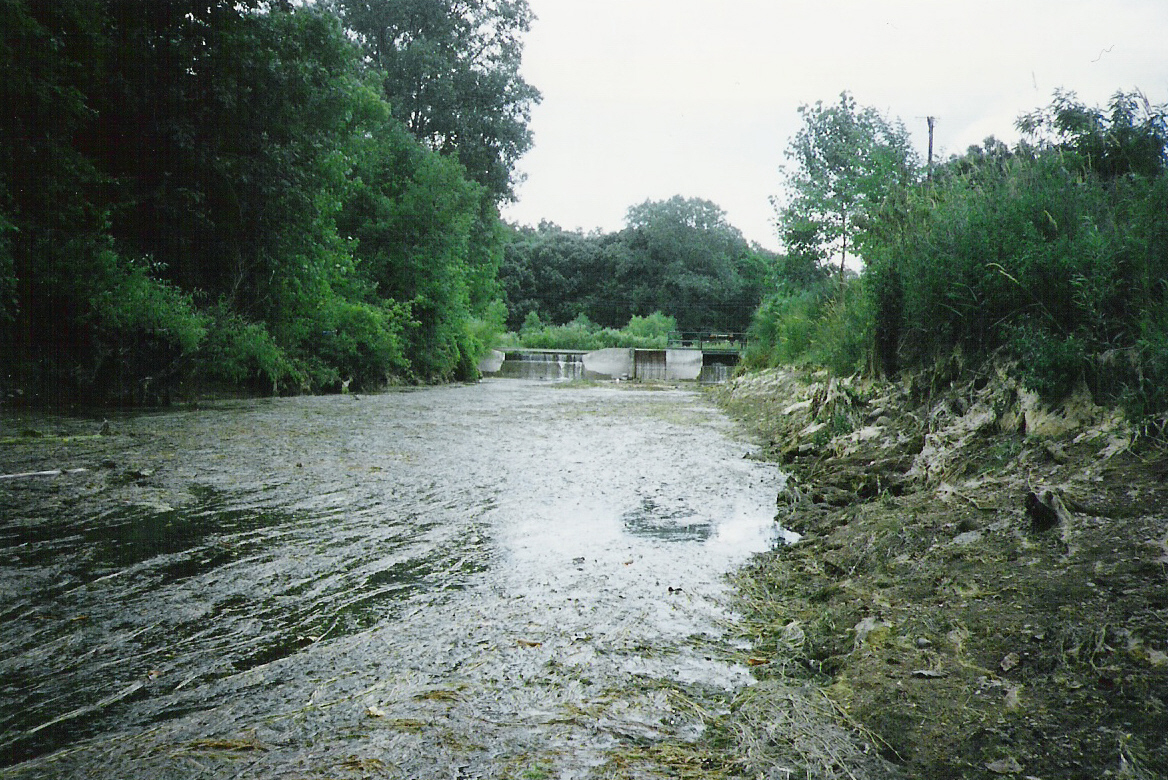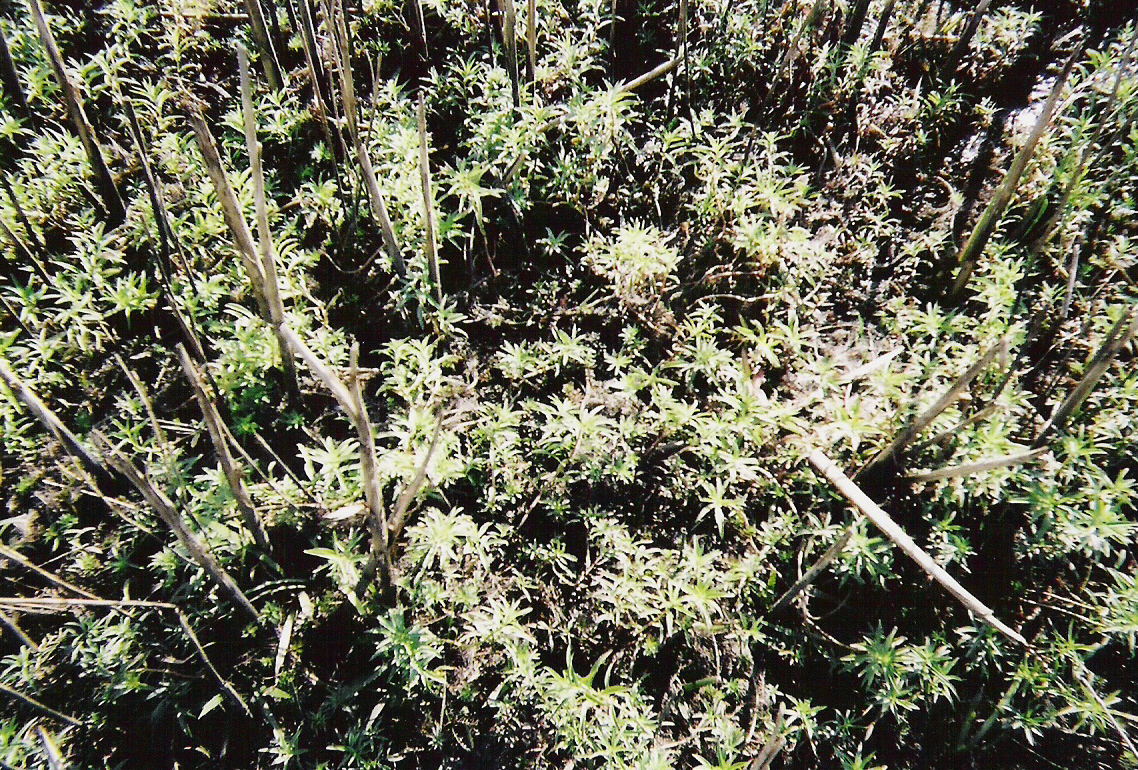

Eurasian milfoil grows to the surface near a wetland area at Lime Lake Indiana At Matteson Lake, MI milfoil beds grow thickly, taking advantage of a fertile creek delta.


Eurasian milfoil grows to the surface near a wetland area at Lime Lake Indiana At Matteson Lake, MI milfoil beds grow thickly, taking advantage of a fertile creek delta.
Eurasian Watermilfoil Myriophyllum spicatum .
A native plant of Europe, Asia, and North Africa, Eurasian milfoil in the U.S. was first documented growing in a pond in
Washington D.C. in 1942. The plant was probably intentionally introduced to the United States (Couch and Nelson 1985)
and has now spread to forty-five of the lower forty-eight states and the Canadian provinces of British Columbia, Ontario,
and Quebec. At least 160 glacial lakes in Northern Indiana now contain the plant (IDNR 1997). Eurasian watermilfoil is
capable of spreading and reproducing by fragmentation. This has hastened itís invasion by allowing introduction to occur
from plant fragments attached to boat trailers. Spread can also occur from plant fragments which enter a lake from upstream
in flowing tributaries. Once established, most localized reproduction occurs by stolon (reproductive root) formation, with
more distant colonization occurring through fragmentation (Aiken et al 1979, Madsen et al 1988). Under experimental
conditions it has been demonstrated that up to 46% of fragments that settle on aquatic substrate become established
(Madsen etal 1997). Obviously fragments produced by powerboat traffic can increase the rate of spread. Eurasian
watermilfoil can be an extremely invasive and fast growing aquatic plant given proper conditions. It often tends to gain a
strong foothold, colonizing areas of ecological disturbance such
as dredged shoreline areas, regions of excessive sedimentation,
and nutrient enriched lakes. This plant can be an extremely
destructive inhabitant in some lakes because of its invasive
nature. Displacement of more beneficial native species often
takes place as the fast growing milfoil achieves a dense canopy
over native plant beds, depriving the slower growing species of
sunlight. The resulting loss of diversity and increase in habitat
compexity causes a variety of trophic changes in an overgrown aquatic system. These include reduced predatory success and

Milfoil shows it adaptability by colonizing the fast water at a Quincy, MI lake outlet
growth of picivorous gamefish (Strange et al 1975) and reduced growth of panfish (Crowder and Cooper 1982). In shallow
lakes milfoil biomass can become extensive enough to cause winter or summer fishkills. This occurs as decomposition of plant
material causes anoxic conditions during periods of low light in late summer, or extensive snow and ice cover in winter. Milfoil
infestations commonly cause problems for boaters, swimmers, and fishermen as dense growths of the plant reach the surface and
grow laterally forming unsightly vegetative mats. Millions of

Undeterred by dry conditions, milfoil uses an adaptive morph to survive in this wetland.
dollars are spent each year in Indiana and Michigan alone, on
control programs. Lake responses to milfoil introduction
vary greatly. In some lakes Eurasian milfoil shows limited
growth, competing side by side with native plants as an
integrated member of the floral community. In this case,
the plant may cause few problems. In other cases the
plant quickly displaces native plant communities becoming a major nuisance within the first five years of colonization.
Once it appears in a lake or pond, Eurasian milfoil can be very effectively controlled with the proper use of aquatic pesticides.
Contact Aquatic Enhancement, Inc. if you would like to investigate a control program for your lake or pond. Lake residents
without this obnoxious invasive weed should take steps to prevent introduction by screening trailers and watercraft that enter the
lake to insure that no plant fragments are introduced.
Literature Cited
Aiken, S.G., P.R. Newroth and I. Wile. 1979. The biology of Canadian weeds. 34. Myriophyllum spicatum L. Canadian Journal of Plant Science 59:201-215.
Couch, R., and E. Nelson. 1985. Myriophyllum spicatum in North America. Pp. 8-18 in L.W.J. Anderson (ed.). First International Symposium Watermilfoil and Related Haloragaceae Species. 23-24 July 1985, Vancouver, B.C. Aquatic Plant Management Society, Vicksburg, MS.
(IDNR) Indiana Department of Natural Resources. 1997. Exotic Plant Species In Indiana Lakes. Lake and River Enhancement Program, Division of Soil Conservation, Indiana Department of Natural Resources, Indianapolis, IN.
Madsen, J.D., L.W. Eichler, and C.W. Boylen. 1988. Vegetative spread of Eurasian watermilfoil in Lake George, New York. Journal of Aquatic Plant Management 26:47-50.